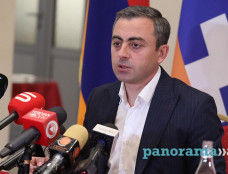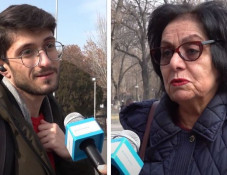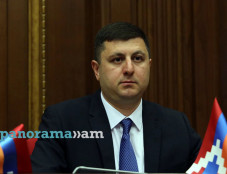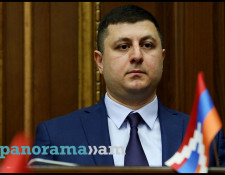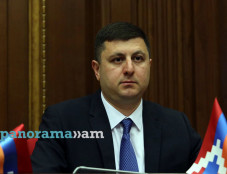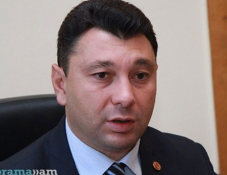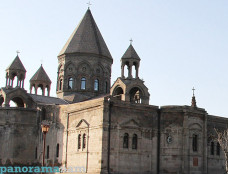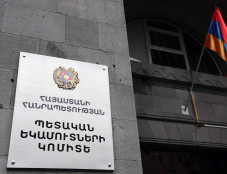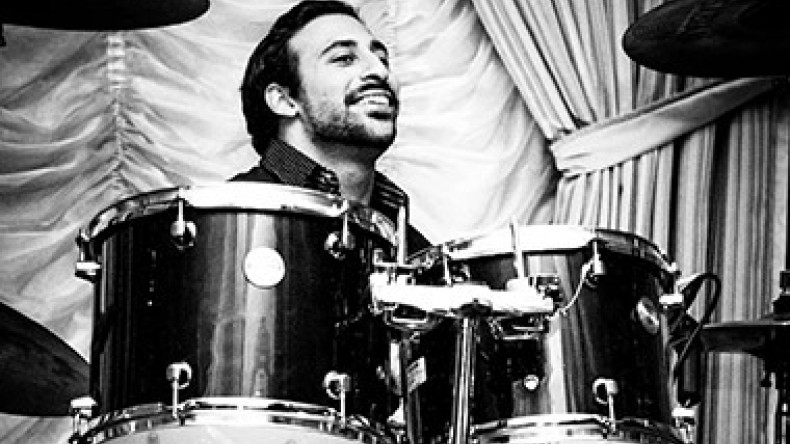
Young Diasporans keeping our culture alive, one song at a time
Ten bold, black letters of the Armenian alphabet are etched across Razmik Tchakmakian’s left upper arm, the letters comprising a powerful word that has been central to the plight of Armenians and significant to our endurance as a people: Veradznoont, or rebirth. Above it rests a symbol of Armenian survival: Tsitsernakaberd, the Armenian Genocide Memorial with a flame emerging from the steel slabs, says an article by Taleen Babayan published in The Armenian Weekly on June 1.
Though born thousands of miles away from the monument and his homeland, Tchakmakian and his two childhood friends, Sevag Titizian and Sevag Haroutunian, feel their submerged patriotism is not only skin-deep but entrenched in their hearts. So much so that these former Armenian School classmates decided to parlay their individual passion for music and join a band to continue the musical traditions of our culturally rich past.
“Pyunik,” which means “phoenix” in Armenian, pays homage to the lineage of talented Armenian musicians and singers who have helped sustain the unique melodies and compositions of our musical traditions.
“It was kind of like a young band rising out of the ashes of those artists before us,” said Tchakmakian.
Playing everything from covers of Harout Pamboukjian’s patriotic tunes to Tata’s crowd pleasers, “Pyunik” seeks to entertain and enliven the spirit of Armenian kef, no matter the occasion.
Formed in 2006 by Haroutunian, the group had its beginnings at St. Mary’s Armenian Apostolic Church in Toronto, where members practiced in the church’s hall, under the auspices of Fr. Meghrig Parikian. Although the group has shifted its members over time, it has found a successful harmony among its current members, who have all been musically inclined since childhood.
Haroutunian, 25, Titizian, 25, and Tchakmakian, 23, each brought a range of talents to the band, and grew up with a great appreciation for music and the arts in their households.
Playing the violin at the age of nine, Haroutunian switched to piano when his older brother brought a keyboard home one day. He soon began taking private lessons with teachers who were experienced in jazz, classical music, and the Divine Liturgy.
Veering more towards percussion, Tchakmakian started playing the drums at 10 and picked up the dhol and dumbeg over the years. Titizian, who sings vocals for “Pyunik,” also plays the piano and drums.
The band members’ musical influences also show diversity, which add to their originality as a group. As a vocalist, Titizian has been heavily influenced by Paul Baghdadlian, Stevie Wonder, James Brown. and Frank Sinatra.
“Armenian music has been a big influence in my life,” said Tchakmakian, who cites Harout Pamboukjian and Ruben Hakhverdyan as singers who have inspired him. “But rock music and classic rock have also played a significant role.”
Haroutunian’s musical interests also span genres and include French-Armenian favorite Charles Aznavour, Canadian guitarist Jesse Cook, and the American heavy metal band Metallica.
“They all paint different colors in my palette, which allows for interpretation and usage of elements from each type of genre,” said Haroutunian.
Throughout our modern history, Armenian musicians and singers have rejuvenated our culture, which has been vulnerable to fading away. Preceding visionaries such as Gomidas and Sayat Nova preserved our music, ensuring that it wouldn’t be lost, and the more contemporary singers, such as living legends Harout Pamboukjian and Adiss Harmandian, modernized them. “Pyunik,” as a young Diasporan Armenian group, is continuing the trend and using their musical talents to engage our generation in the music of our people, while putting their own modern spin on it.
“Armenian music is close to my heart,” said Haroutunian, who sang in the Armenian Relief Society (ARS) Armenian School of Toronto’s school choir and church choir. “And we believe that young people our age need to listen and dance to more Armenian tunes.”
Tchakmakian echoed Haroutunian’s words, and though he has played in rock music bands, says Armenian music “is our own and the younger generation has to carry it on.”
Music, in all ethnicities, is one of the simplest and most effective ways to keep a people united. If not for the arts, Armenians from Toronto to Buenos Aires to Sydney wouldn’t know the familiar sound of an oud, the universal steps to a “shoorch bar,” or the symbolic words to our folkloric songs. And if it weren’t for those dedicated to continuing our traditions, we would be overshadowed in a world comprised of more populous and powerful ethnic groups.
“Pyunik,” which has steadily been making a name for itself over the years, has performed at a plethora of Armenian events both in Canada and in the U.S., including the AYF Olympics in Chicago, Montreal’s Kermesse, and Toronto’s Winterfest. Their most recent performance was on the Armenian Heritage Cruise earlier this year, which displayed their talents to a wider audience.
“Performing on the cruise was great,” said Tchakmakian. “There’s a cultural aspect that people may not have access to in their own communities.”
“It was a different dynamic to perform for people from all over the world,” said Titizian. “The vibe was great and it was nice to see everyone having a great time.”
The band would like to continue performing, writing more of their own music and eventually putting out an album. In the meantime, they are focused on their professions and their own independent projects. The childhood friends support each other’s creative endeavors, such as Titizian’s recently released “Du Im Sern Es,” a contemporary Armenian song with an energetic dance beat. Haroutunian composed the musical arrangements and Tchakmakian makes a cameo in the popular music video, which was shot on location in downtown Toronto. The song, written by Titizian, has already reached over 10,000 hits on YouTube. Tchakmakian’s YouTube channel, “Chaks Drums,” has already reached over 7,000 views in its short history.
“We are all children of a great community and an even greater culture who have lots to offer to the world,” said Haroutunian.
Their devotion to Armenian music brought them together. The commitment to their culture will keep them connected for years to come.
“All of us have the same passion of being Armenian and supporting Armenian causes,” said Titizian. “We are trying to keep our culture alive. If we don’t do it who will?”
Newsfeed
Videos





